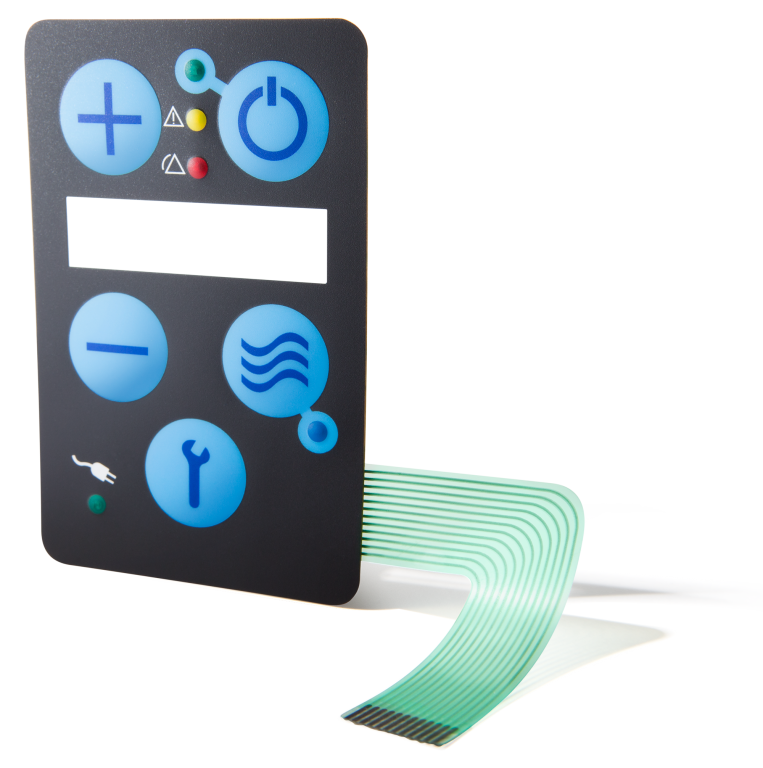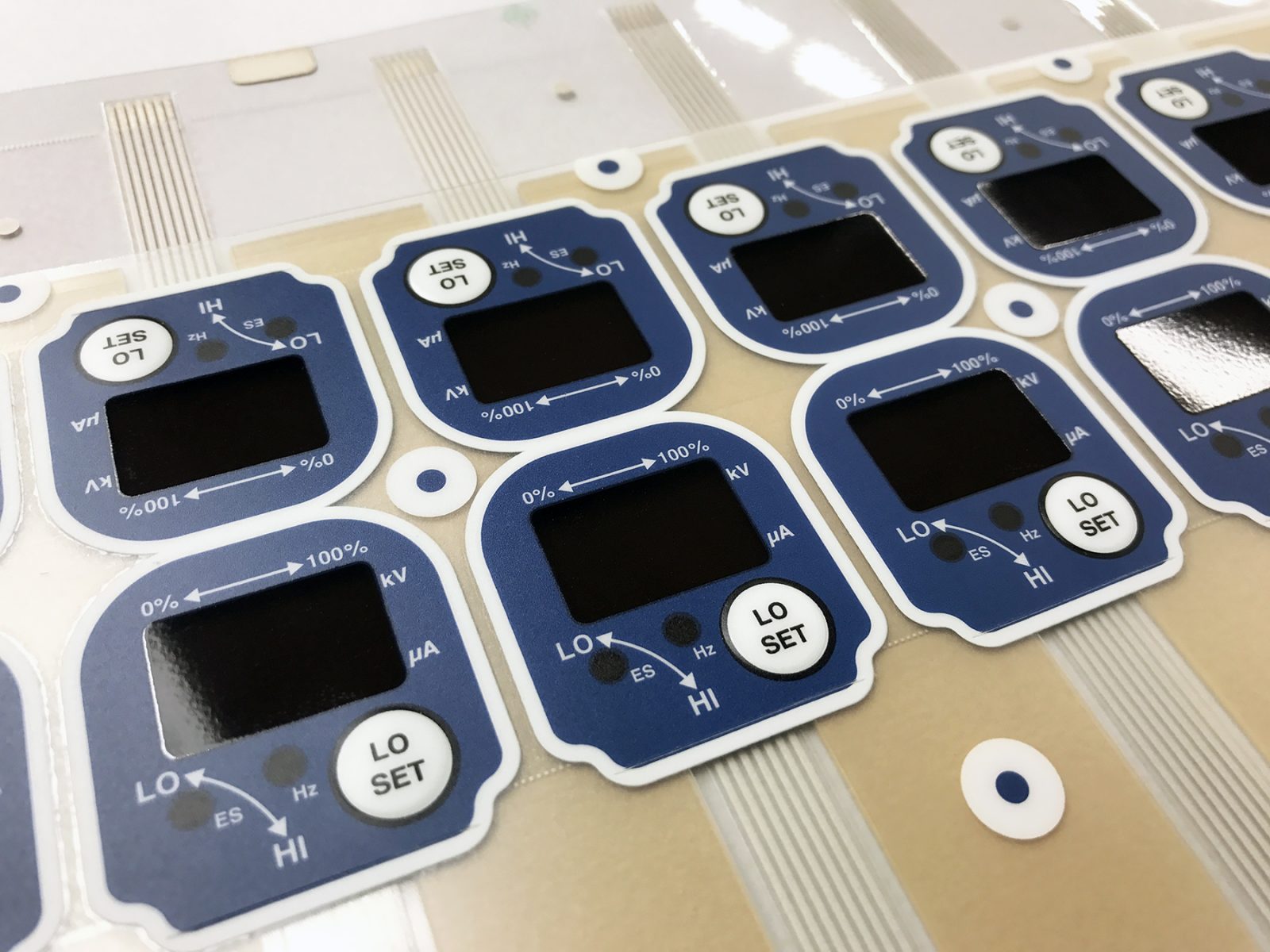A Comprehensive Guide to Membrane Switch Design and Manufacturing
Understanding Membrane Layer Switches Over: The Secret to Resilient and Trustworthy Controls
Membrane layer changes represent a crucial aspect of modern-day user interface design, mixing performance with resilience in numerous applications. These flexible parts not just help with user communication yet are also crafted to stand up to the rigors of requiring atmospheres, from clinical gadgets to commercial machinery. Recognizing their building, operation, and the myriad benefits they offer is crucial for designers and designers alike. As we check out the intricacies of membrane layer switches, it becomes clear that their function in boosting control systems is both complicated and profound, questioning concerning how ideal to leverage their abilities in future technologies.
What Are Membrane Layer Buttons?
Membrane switches are an advanced option in the world of interface modern technology, incorporating functionality and design effortlessly. These tools act as a user interface in between customers and digital systems, incorporating numerous parts into a small style. Normally created from adaptable, slim layers of products, membrane layer buttons are designed to reply to touch, enabling users to communicate with machinery and electronic devices successfully.
The main elements of a membrane switch consist of a published circuit layer, visuals overlay, and a spacer layer that stops unexpected activation. The graphic overlay can be customized to show brand identity or user choices, boosting aesthetics while ensuring use. Membrane switches are generally made use of in different applications, including medical gadgets, consumer electronic devices, and commercial devices, owing to their sturdiness and resistance to ecological variables such as dampness and dirt.
One of the key benefits of membrane switches is their ability to withstand damage, making them suitable for high-traffic atmospheres. Additionally, they are lightweight and require minimal room, permitting for innovative layouts in item growth. Overall, membrane layer switches represent a efficient and functional option for contemporary digital interfaces, weding innovation with user-centric layout principles.

How Membrane Layer Switches Over Work
The operation of membrane switches joints on a basic yet efficient mechanism that translates user input right into digital signals. These switches contain numerous layers, normally including a graphic overlay, a spacer layer, and a circuit layer. When a user presses the button, the top layer deforms, permitting a conductive component in the circuit layer to reach a matching conductive pad on the underside of the visuals overlay. This get in touch with shuts the circuit and sends out an electronic signal to the gadget, indicating that the switch has actually been activated.
The design of membrane layer switches can differ, but they usually integrate domes or tactile aspects to provide comments to the customer, improving the total experience. The products utilized in membrane layer switches, such as polyester or polycarbonate, add to their resilience and resistance to ecological factors, including dampness and dust. The printed circuits are normally encapsulated, which safeguards them from wear and tear over time.

Benefits of Membrane Buttons
One of the key advantages of membrane layer switches is their flexibility in design, permitting them to be personalized to meet certain user demands and aesthetic needs. This versatility includes different industries, where different forms, sizes, and shades can be employed to enhance user communication and visual allure.
In addition, membrane buttons are understood for their durability. Built from durable materials, they are resistant to dirt, dampness, and physical wear, which dramatically extends their life expectancy contrasted to conventional mechanical buttons. This durability makes them especially suitable for high-traffic environments and applications needing long life.

Additionally, membrane layer switches offer a structured profile, causing a thinner design that can be incorporated right into different tools without adding mass. This feature not just boosts the aesthetic charm but likewise adds to a more ergonomic product design.

Applications of Membrane Buttons
Straightforward and functional, membrane layer buttons locate applications across a large range of sectors, including medical gadgets, customer electronics, and industrial devices. In the clinical area, these buttons are integral to gadgets such as diagnostic devices, patient monitoring systems, and infusion pumps, where dependability and simplicity of cleansing are essential. Their ability to endure harsh settings right here and keep functionality makes them optimal for such applications.
In consumer electronic devices, membrane layer buttons are made use of in items like microwaves, cleaning makers, and push-button controls - membrane switch. Their smooth style permits intuitive interface, improving the general customer experience while giving sturdiness and resistance to use and tear
Industrial devices also gains from membrane buttons, specifically in control panels for equipment and automation systems. These switches provide protection versus dirt and moisture, guaranteeing constant like this performance in challenging environments. Furthermore, their personalized attributes enable producers to tailor them to specific functional requirements, enhancing efficiency and capability.
Selecting the Right Membrane Layer Switch
When choosing a membrane button, it is important to take into consideration various factors that influence efficiency and suitability for certain applications. The key considerations consist of environmental problems, tactile responses, sturdiness, and layout specifications.
First, examine the operating environment; switches subjected to dampness, chemicals, or severe temperatures call for specific materials to make sure longevity and functionality. Next off, review the need for tactile feedback. learn the facts here now Depending upon individual communication, some applications might take advantage of a tactile action to validate activation, while others may like a non-tactile layout for visual reasons.
Sturdiness is an additional critical element; membrane switches should be developed to stand up to constant usage, impacts, and abrasion. Ensure the selected switch can withstand the anticipated lifecycle, specifically in high-usage circumstances.
Verdict
To conclude, membrane switches function as important components in the design of long lasting and dependable control systems across different markets. Their compact design, combined with robust building and construction and customizable features, enhances individual communication while making sure durability sought after atmospheres. The flexibility of membrane switches over permits for tailored options that satisfy certain functional demands, strengthening their importance in modern innovation. membrane switch. As industries continue to develop, the relevance of integrating efficient membrane button options can not be overstated.
Membrane switches over represent a crucial facet of modern user interface design, mixing functionality with durability in numerous applications.Membrane layer switches are an advanced solution in the realm of customer interface technology, integrating functionality and style perfectly. Typically built from adaptable, thin layers of materials, membrane layer buttons are designed to respond to touch, making it possible for users to communicate with equipment and digital devices efficiently.
The layout of membrane layer switches can vary, however they frequently integrate domes or responsive components to provide comments to the individual, boosting the total experience.In conclusion, membrane switches over serve as important elements in the style of trustworthy and sturdy control systems across different markets.